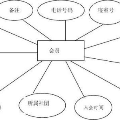In recent years there has been great progress in the use of machine learning algorithms to develop interatomic potential models. Machine-learned potential models are typically orders of magnitude faster than density functional theory but also orders of magnitude slower than physics-derived models such as the embedded atom method. In our previous work, we used symbolic regression to develop fast, accurate and transferrable interatomic potential models for copper with novel functional forms that resemble those of the embedded atom method. To determine the extent to which the success of these forms was specific to copper, here we explore the generalizability of these models to other face-centered cubic transition metals and analyze their out-of-sample performance on several material properties. We found that these forms work particularly well on elements that are chemically similar to copper. When compared to optimized Sutton-Chen models, which have similar complexity, the functional forms discovered using symbolic regression perform better across all elements considered except gold where they have a similar performance. They perform similarly to a moderately more complex embedded atom form on properties on which they were trained, and they are more accurate on average on other properties. We attribute this improved generalized accuracy to the relative simplicity of the models discovered using symbolic regression. The genetic programming models are found to outperform other models from the literature about 50% of the time in a variety of property predictions, with about 1/10th the model complexity on average. We discuss the implications of these results to the broader application of symbolic regression to the development of new potentials and highlight how models discovered for one element can be used to seed new searches for different elements.
翻译:近年来,机器学习算法在开发互动势模型方面取得了很大的进展。机器学习的势能模型通常比密度泛函理论快几个数量级,但比嵌入原子方法等物理推导模型慢几个数量级。在我们先前的工作中,我们使用符号回归开发了快速、准确和可传递的铜原子势能模型,并发现了类似嵌入原子方法的新颖函数形式。为了确定这些形式的成功程度是否特定于铜,我们在这里探讨了这些模型对其他面心立方过渡金属的普适性,并分析了它们在几个材料属性方面的样本外表现。我们发现这些形式在与铜化学相似的元素中特别有效。与优化的Sutton-Chen模型相比,这些使用符号回归发现的函数形式在除金外的所有元素上的性能都更好,其中在金上它们具有相似的性能。在被训练的属性方面,它们与适度更复杂的嵌入原子形式表现相似,并且在其他属性上平均更准确。我们将这种改进的广义准确性归因于使用符号回归发现的模型的相对简单性。遗传编程模型在各种属性预测中约有50%的时间优于文献中的其他模型,平均约为1/10的模型复杂度。我们讨论了这些结果对符号回归在开发新型势能中的广泛应用的影响,并强调了如何使用针对一个元素发现的模型来启动用于不同元素的新搜索。



